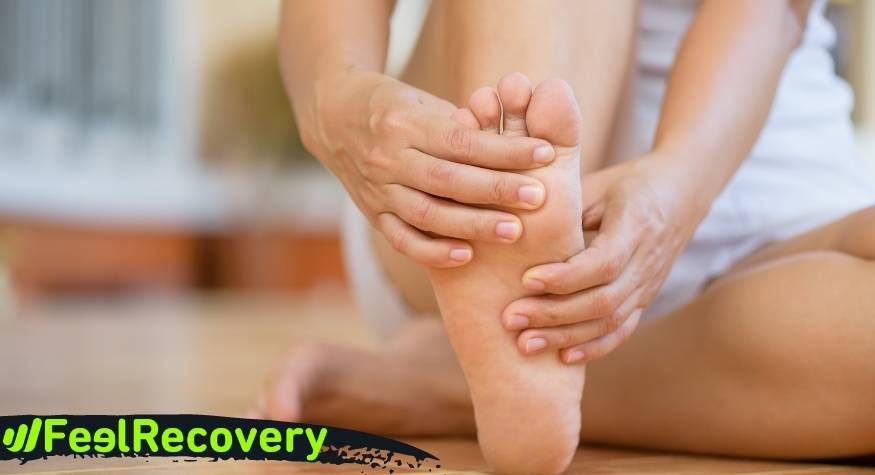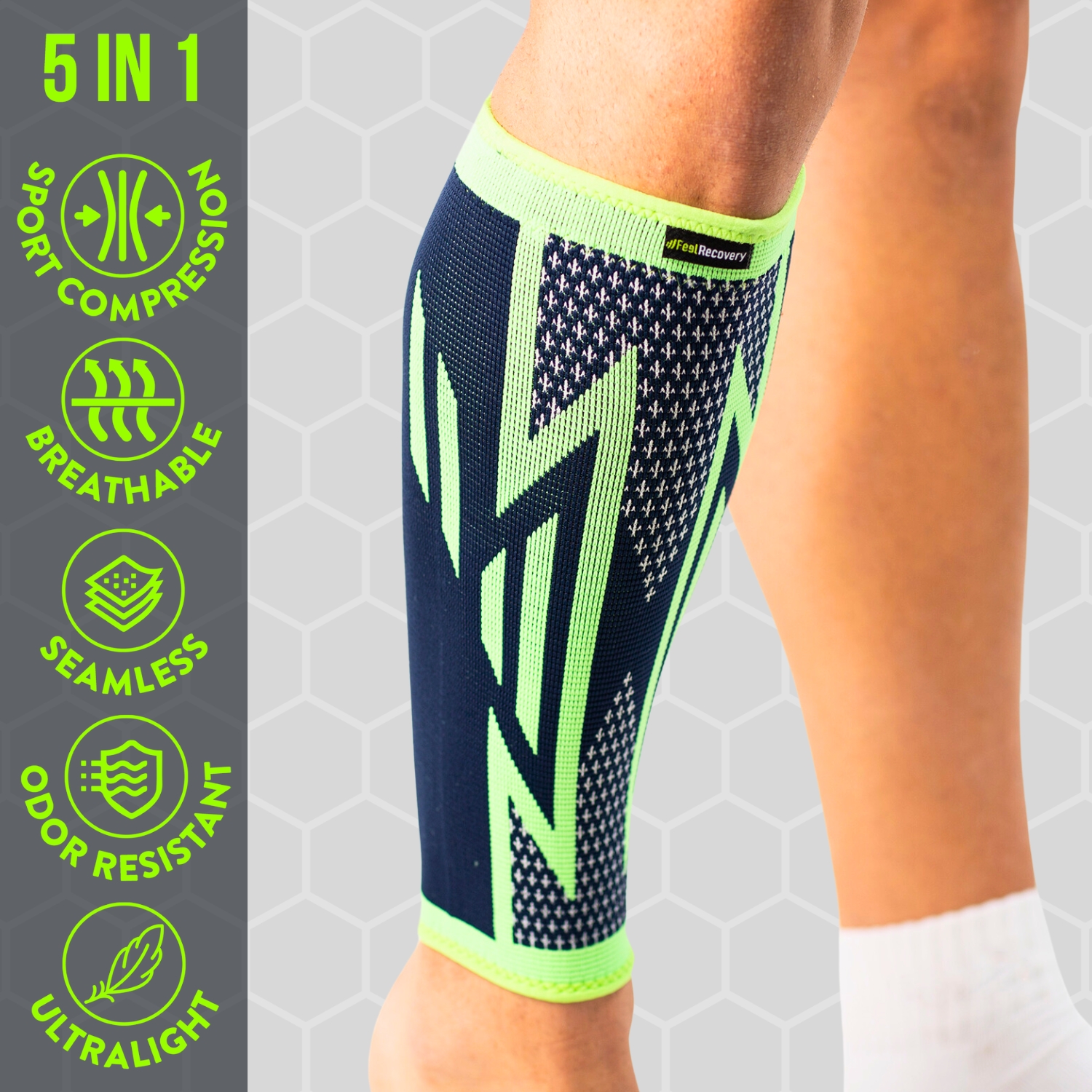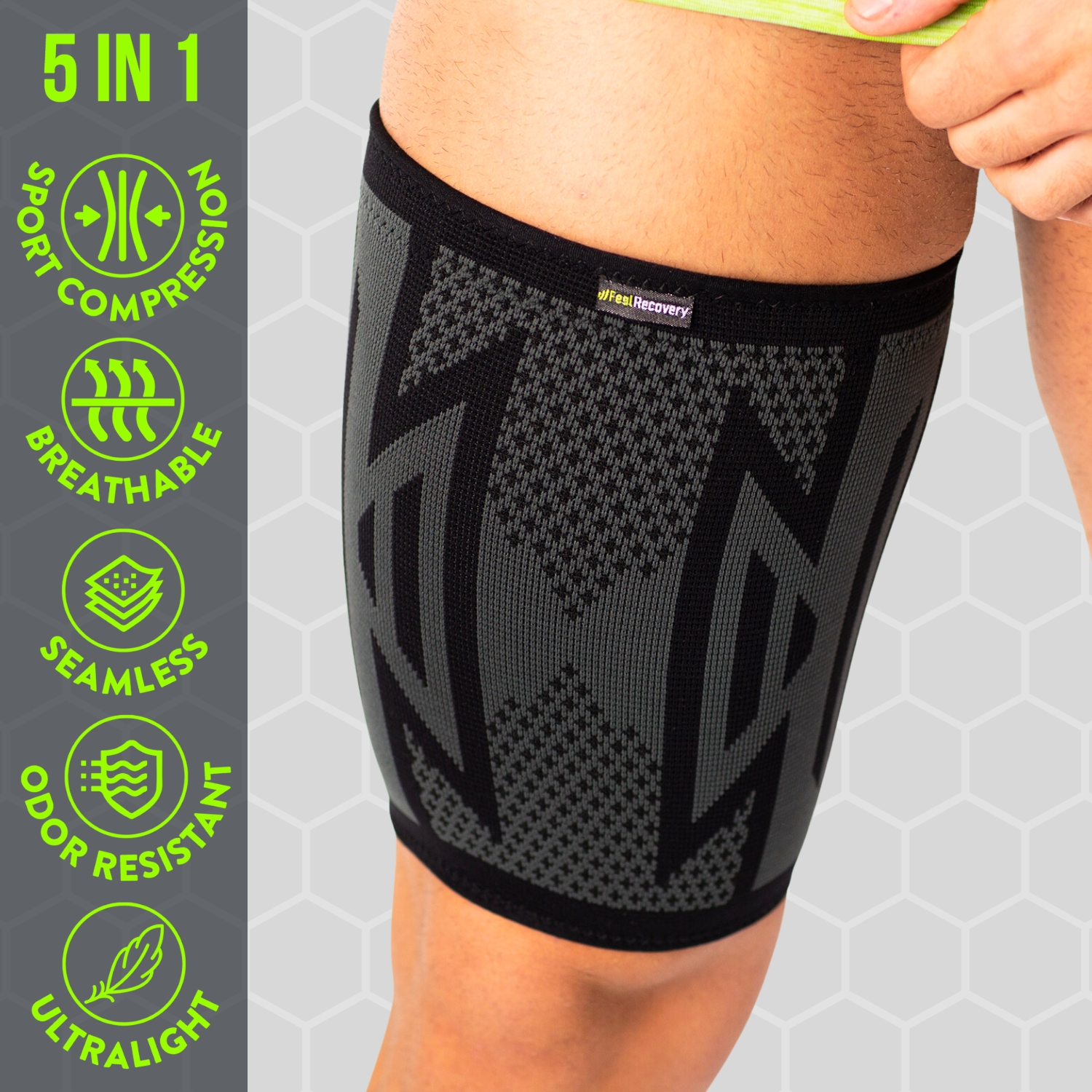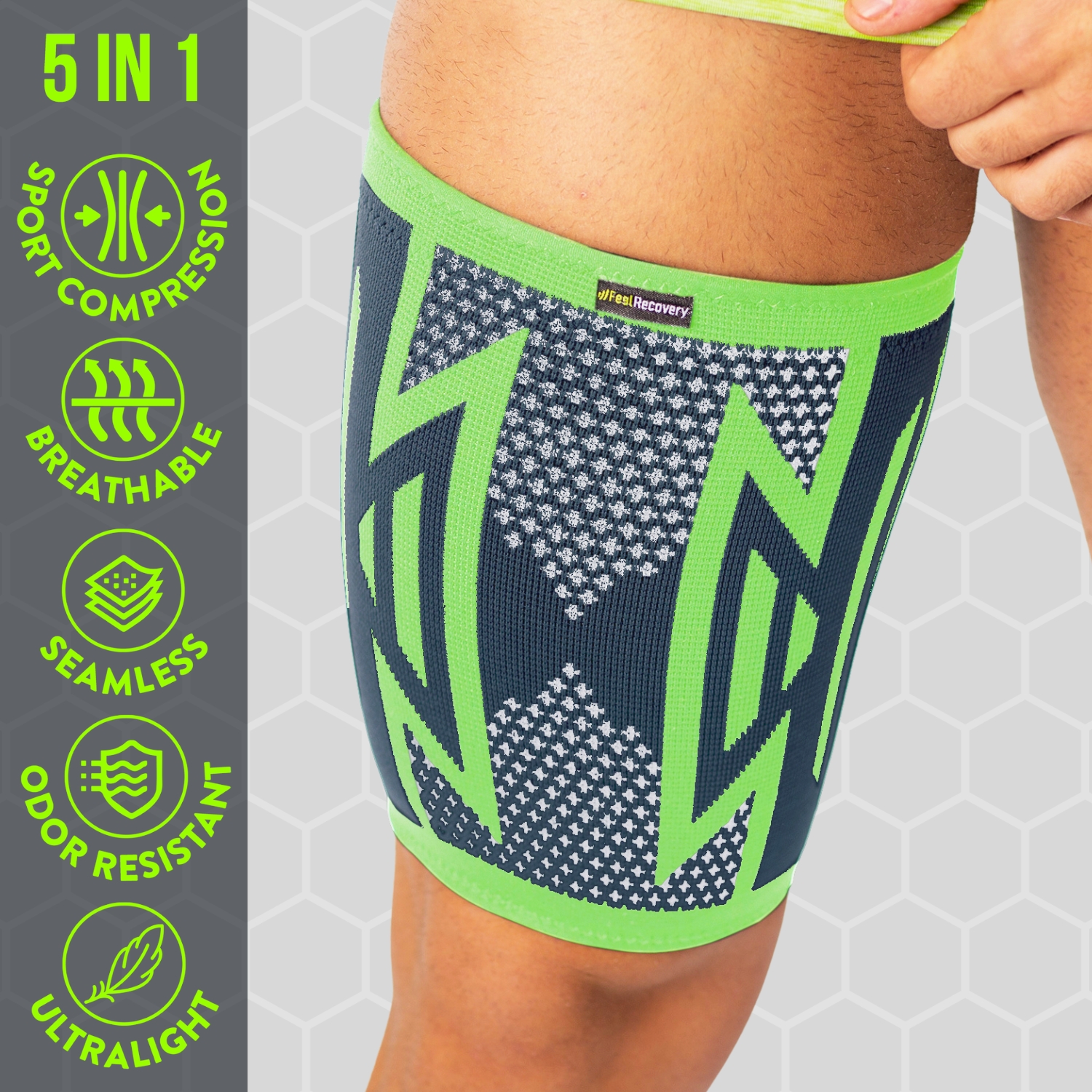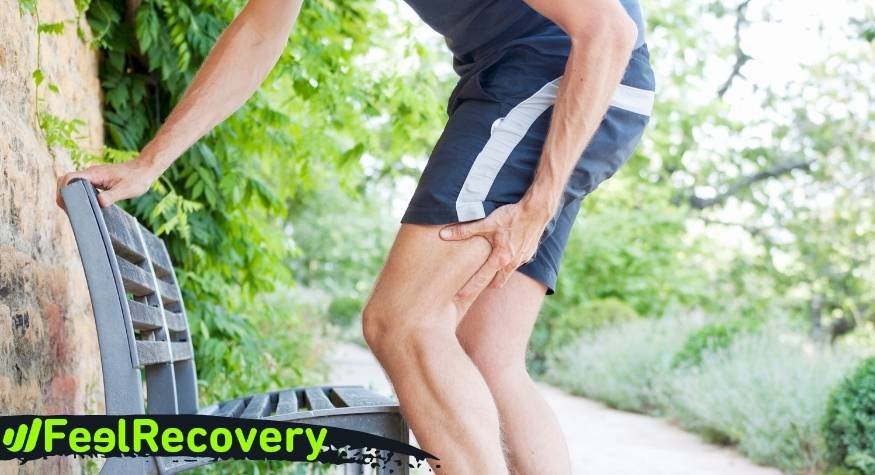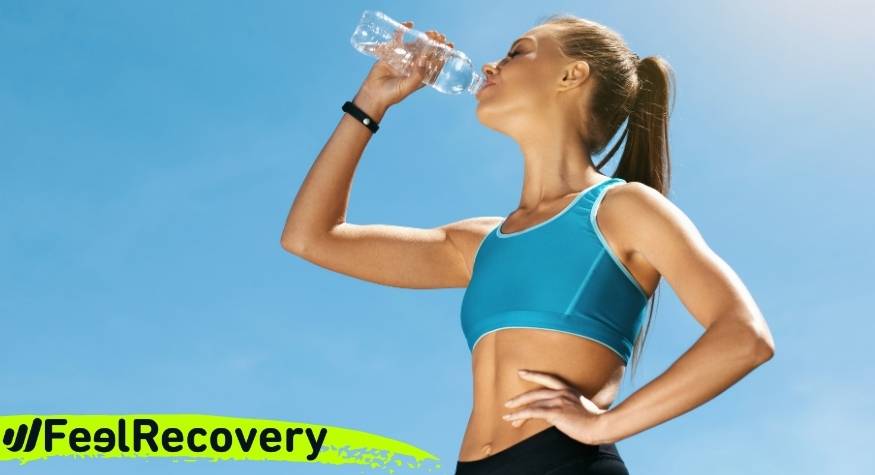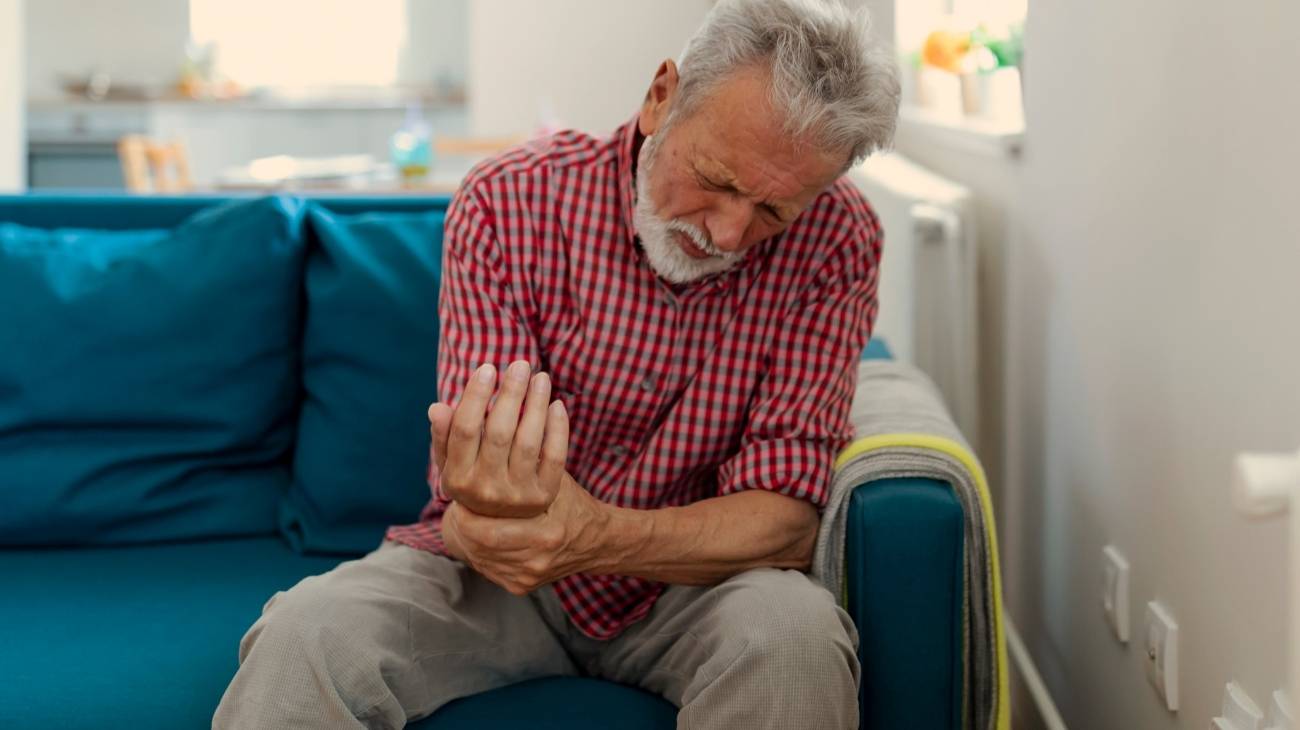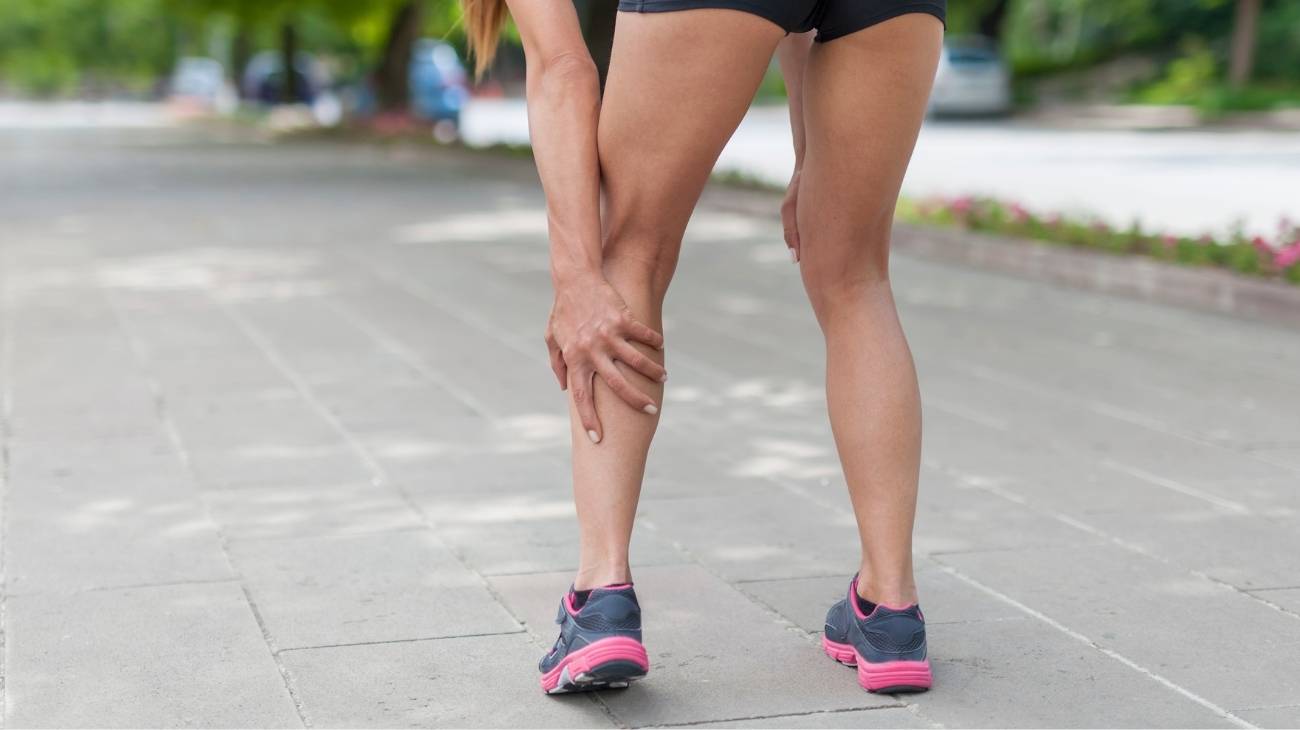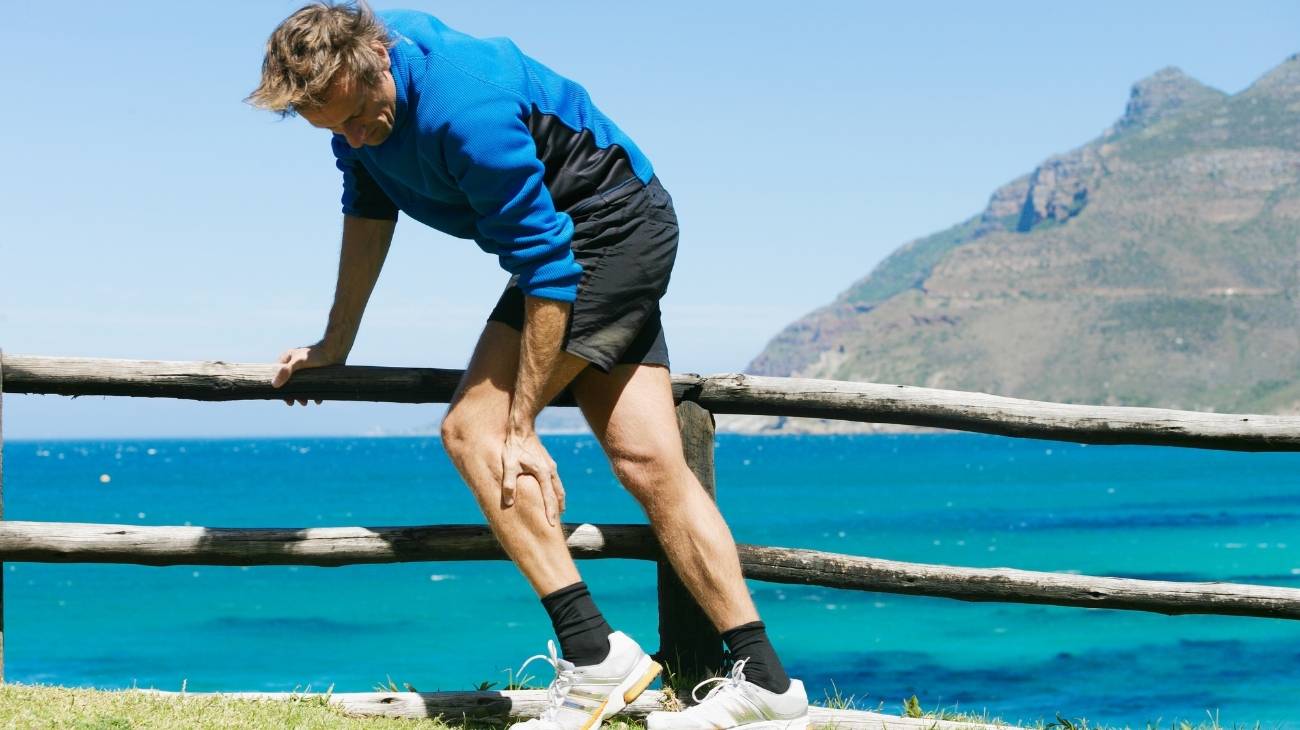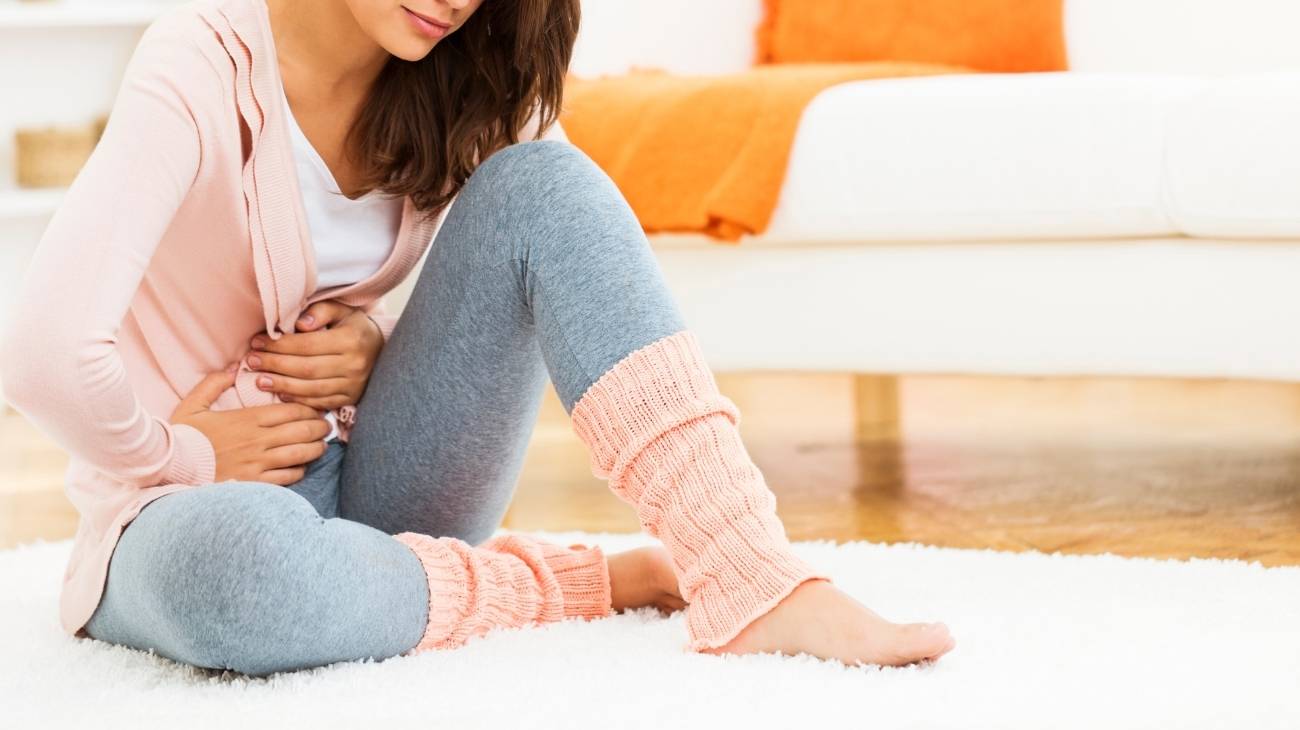- Definition: What are muscle cramps?
- What are the most common types of muscle cramps and spasms?
- Best cramps products
- What are the causes and risk factors of muscle spasms?
- Main symptoms associated with muscles cramps
- How to relieve the pain and improve the symptoms of muscle cramps?
- What are the most effective prevention methods for muscle cramps?
- F.A.Q: Frequently asked questions
Sometimes, muscle cramps or spasms attack many people suddenly, producing great pain that can last for seconds or even several minutes. Hence, the big question arises as to what these involuntary contractions are and what types exist.
That is why, in this post, we will focus on giving you information about muscle cramps, as well as their main causes and symptoms, what methods exist to improve the pain caused by them and other common doubts in favour of keeping your health in the best possible state.
Definition: What are muscle cramps?
Cramps are defined as involuntary muscle contractions that are produced when one or more muscles in the human body stiffen and contract, making it impossible to relax. In such a way, they generate a noticeable pain in people that can last from a few seconds to several minutes. In the worst cases, the pain lasts for more than 15 minutes.
In this sense, although they normally occur in the legs and feet, causing flexion of the foot and toes, the truth is that they can also occur in any other muscle in the body. This is usually associated with a magnesium deficiency in the body, although there are other known causes of sudden spasms, both after exercise and when the body is at rest.
What are the most common types of muscle cramps and spasms?
Many patients of this involuntary ailment wonder if there are several types of cramps and that is why, in the face of such a latent doubt, we point out that different types of muscle spasm can be identified, which may vary depending on their nature. Either according to the moment in which they occur or the type of muscle affected in the individual.
Therefore, below, we highlight what each one of them consists of:
According to the moment of the cramp
Given that sudden muscle contractions tend to appear as a result of exercise, the main classification of this ailment lies in the moment at which the cramp occurs.
Whereas they usually occur during exercise or after a great muscular effort:
- Spasms during exercise: If the affected individual overexerts while exercising, especially by exercising at a higher intensity than usual, it is likely that they will suffer a muscle spasm during their physical activity. This may be due to dehydration, incorrect technique, lack of fitness and sweating.
- Spasm after exercise: Spasm can also occur after exercise, especially if the person has been exercising for longer than usual. This type of contraction is common after a long and demanding physical activity. Because muscle blood flow undergoes extreme changes and if it is insufficient, it will cause such a sudden contraction.
According to the type of musculature affected
Another classification of cramps refers to the type of musculature affected in humans. This, at the same time, depends on the individual's basic condition.
Therefore, in the following, we mention what kinds of spasms exist with regard to the impacted muscles:
- Nocturnal cramps: These are those that are generated when there are low levels of certain minerals (such as magnesium, for example), as well as by the decrease in blood flow through the muscles (due to lying down or sitting for a long time) and also due to dehydration. Thus, they occur at night and are the most common of all.
- Smooth muscle cramps: These muscle cramps usually occur before and/or during a woman's menstrual cycle. For this reason, they are mainly characterised as symptomatic contractions.
- Skeletal muscle cramps: These refer to cramps associated with strenuous and exhausting activity (although in some cases they occur during relaxation) that end up affecting the thighs, arches of the feet and calves of individuals. Compared to the other types, skeletal muscle cramps are the most painful of all.
Best cramps products
Bestseller
-
2 Calf Compression Sleeve (Black/Gray)
$24.95 -
2 Calf Compression Sleeve (Green/Navy)
$24.95 -
2 Calf Compression Sleeve (Pink/Bordeaux)
$24.95 -
2 Thigh Compression Sleeve (Black/Gray)
$24.95 -
2 Thigh Compression Sleeve (Green/Navy)
$24.95 -
2 Thigh Compression Sleeve (Pink/Bordeaux)
$24.95 -
Sport Compression Socks (1 Pair) (Black/Gray)
$24.95 -
Sport Compression Socks (1 Pair) (Green/Navy)
$24.95 -
Sport Compression Socks (1 Pair) (Pink/Bordeaux)
$24.95
-
Foot Massage Roller for Plantar Fasciitis (Black)
$24.95 -
Foot Massage Roller for Plantar Fasciitis (Green)
$24.95 -
Foot Massage Roller for Plantar Fasciitis (Pink)
$24.95 -
Ice Massage Roller Ball (Black)
$39.95 -
Ice Massage Roller Ball (Green)
$39.95 -
Ice Massage Roller Ball (Pink)
$39.95 -
Soft Density Foam Roller for Recovery (Black)
$39.95 -
Soft Density Foam Roller for Recovery (Green)
$39.95 -
Soft Density Foam Roller for Recovery (Pink)
$39.95
What are the causes and risk factors of muscle spasms?
In addition to the fact that muscle cramps are involuntary and painful spasms in one or more muscles of the body, which can occur due to an increase in the frequency of muscle action and/or due to the high demand of a physical activity, there are also other causes for which these contractions appear for a certain period of time.
As a consequence, we mention which risk factors increase the likelihood of a person suffering from these complaints:
- Due to low levels of electrolytes, such as magnesium, calcium or potassium.
- Due to muscles that have poor blood supply or acquire an inadequate blood supply.
- They are also experienced during the dialysis process after loss of kidney function.
- Dehydration or doing physical activity without drinking enough fluids is another cause of muscle cramps.
- If the individual feels stress or has nerve compression (in the back or neck), they are likely to suffer sudden contractions.
- There are certain medications that cause these muscle spasms, as side effects.
- During pregnancy, women may also suffer from intense muscle cramps.
- Another risk factor for these ailments is that individuals are overweight.
- In many situations, muscle spasms often affect adults over 60 years of age.
- Conditions such as diabetes, liver, thyroid and nerve disorders also lead to cramping of the patient's muscles.
Main symptoms associated with muscles cramps
Once muscle spasm occurs in people, the main sign of all refers to the sensation of tension and pain in the affected muscle which, in some circumstances, is truly intense.
However, beyond this, there are other symptoms associated with cramps that are worth knowing about and that is why, below, we list the most relevant ones:
- Sudden and uncontrollable stiffening and contraction of the musculature .
- A noticeable tenderness in the muscle for 24 hours after the initial cramp.
- During or after the contraction, a hard lump of muscle tissue may develop under the skin.
How to relieve the pain and improve the symptoms of muscle cramps?
In view of the severe pain that muscle cramps cause in people, those affected wonder what solutions they can resort to in order to reduce and alleviate the pain and improve the symptoms generated by this type of affliction.
Fortunately, medicine guarantees different alternatives so that these patients can free themselves from this affliction and here, we detail what they are:
Alternative and complementary therapies
Basically, a therapy or treatment is defined as a set of means to cure or alleviate the symptoms of certain diseases and/or pain caused by a medical condition.
In the case of sudden muscular contractions, patients can resort to a wide variety of therapies, such as:
- Heat and cold therapy: Because this therapeutic technique decreases inflammation, relieves pain and increases blood circulation, it is recommended to improve symptoms caused by muscle cramps. Thus, you can apply heat when the muscle is tight and use ice gel packs, cold compresses or ice when the muscle hurts.
- Compression therapy: Known as "medical compression therapy", this is distinguished as therapy that uses an elastic element on the limbs or other areas of the body in order to exert controlled pressure on them by squeezing the walls of the veins. In this way, it increases the speed and volume of blood flow, thus improving the symptoms generated by the cramp and reducing the appearance of them.
- Massage therapy: Therapeutic massages are mainly characterised by rubbing and rubbing a specific area of the body to relax it. In doing so, they have the ability to reduce blood pressure and improve circulation, as well as reduce pain and stiffness. They are therefore indicated to relieve symptoms caused by muscle spasms.
- Acupressure therapy: This refers to a treatment proposed by traditional Chinese medicine that consists of stimulating various points on the human body by exerting pressure on certain areas (sole of the foot, palm of the hand, pinna, etc.) with the fingers or elbows. This soothes pain in localised areas and is therefore perfect for patients affected by cramps as it triggers a healing response within the body.
- Thermotherapy: For therapeutic purposes, thermotherapy uses the application of heat to provide a sedative and relaxing effect on the patient. Whether in solid, semi-liquid or gaseous form, it acts as an analgesic and anti-inflammatory. As a result, it can reduce the pain in a particular area that has been affected by a muscle spasm.
- Natural remedies using plants: Another complementary therapy that can improve the signs of these contractions is based on the use of medicinal plants or natural remedies that can promote blood circulation and generate an anti-inflammatory effect to alleviate the affliction. For cramps, some of the best options are: Rosemary, horse chestnut, dandelion and horsetail infusions.
- Ultrasound: Patients who frequently suffer from sudden spasms can also turn to pressure wave therapy, also known as "ultrasound". These are inaudible sounds that cause pressure on the soft tissues and thus also produce local heat. They thus function as an ideal means of relieving cramps in the musculature.
- Meditation and relaxation: Another solution to relieve pain caused by muscle spasms and even to avoid these contractions is to resort to meditation to achieve a state of relaxation that allows the individual to become more aware of their body, understand their ailments, clear the subconscious of any tension and relieve anxiety.
- Aromatherapy: As an alternative medicine based on the use of aromatic materials (including essential oils), aromatherapy has been developed to improve the physical and psychological well-being of people. In view of this, many essential oils are recommended to soothe pain caused by cramps, as well as to provide a state of relaxation and pleasure through aromas. Among the best for this are: Thyme, lavender, cayenne and fennel essential oils.
- Acupuncture: This key component of traditional Chinese medicine, which involves the insertion of fine needles into the body at certain points, also stands out as another ideal treatment for improving the symptoms of muscle spasms. Thanks to this, blood circulation is increased, muscle pain is soothed and the patient's Qi is balanced.
- Biofeedback: With the help of electrical equipment, this treatment focuses on monitoring the affected person's heart rate along with their blood pressure, muscle tension and temperature to help them become more aware of their body's reaction to pain. In such a way, the feedback combined with some relaxation techniques promises to control the body's responses to the discomfort caused by the cramp.
- Healthy lifestyle habits: It is also essential to implement some healthy lifestyle habits to avoid these conditions caused by involuntary muscle contractions. Among which, the following can be highlighted: Staying hydrated by drinking plenty of fluids every day, preventing a sedentary lifestyle, stretching properly before exercising, doing physical activities without overdoing it, eating healthily, etc.
Nutritional supplements
To prevent muscle contractions and/or to soothe the pain caused by these spasms, it is also advisable to take certain food supplements. These are ideal to complement a healthy diet, thanks to their ingredients that allow you to obtain vitamins, minerals, fatty acids, amino acids and enzymes. This will also help you to keep your mind and body in good shape.
Now, specifically, it is worth pointing out which are the best foods to avoid cramps in the muscles and therefore, here we proceed to list them:
- Dietary supplements rich in potassium: e.g. tomatoes, carrots, bananas, melons, oranges and kiwis.
- Chicken and beef are also suitable for the prevention of these ailments. They are rich in protein and provide the recommended daily level of potassium (4.7 grams).
- Dairy products: Dairy products such as milk, yoghurt and cheese are also recommended as they are rich in calcium (an essential mineral for muscles, nerves and bones). In case you are lactose intolerant, you can resort to soy.
- Nuts: Another ideal supplement to prevent muscle cramps is walnuts, which provide a high level of magnesium. This not only helps your muscles, but also improves the functioning of your brain.
- Fresh fruit: Avocado is also suitable for getting a good amount of magnesium and thus minimising the risk of muscle spasms.
- Berries: To eliminate free radicals that accumulate in the muscles and cause cramps, eat antioxidant blueberries as a compote.
- Juice: Many experts recommend drinking ginger juice to improve circulation and prevent night cramps. When preparing it, you can add a couple of squeezed lemons with some ginger.
Medicines
If the condition caused by muscle cramps has generated excessive pain in the patient, is accompanied by redness, swelling or a sensation of heat, occurs often, lasts a long time and cannot be alleviated by means of therapies or natural medicine, it is best to seek the advice of a health professional who can provide you with the correct care measures.
This will likely include prescribing medication to soothe pain and inflammation, as well as to reduce the likelihood of muscle spasms in the future.
While it is ideal to take medication to improve symptoms, it is not appropriate to resort to self-medication without first visiting a trained physician. This could be ineffective, cause adverse reactions, generate dangerous side effects and even intoxicate the patient.
What are the most effective prevention methods for muscle cramps?
As with any other injury, it is better to prevent cramps than to try to alleviate the pain caused by them. Therefore, it is essential that people who have suffered from muscle cramps take some preventive measures to help avoid them.
Here we specify several prevention methods that are really effective:
- Stretching: Before or during a muscle contraction, stretching is a great ally to prevent them from occurring and even to provide relief to the muscle. It is therefore recommended to do a good stretch before doing any physical activity and even before going to sleep (if you have suffered from leg cramps at night).
- Progressive training: If you train constantly, it is important that you choose to graduate the duration and intensity of the physical exercise. This will allow your body to adapt to the increased activity over time and your muscles will not overstrain and become contracted and/or injured.
- Hydration is also an excellent precaution against muscle spasm. For this reason, it is ideal to drink plenty of fluids on a daily basis to avoid any degree of dehydration. Dehydration is one of the main causes of muscle cramps.
- Healthy diet: Another key to prevent this ailment is to have a healthy and balanced diet, consuming the food supplements that we mentioned above. The more potassium, magnesium, calcium, protein and vitamins you eat, the less likely it is that your muscles will stiffen and contract suddenly.
- Meditation and relaxation: Of course, having states of anxiety, restlessness and, in short, stress, will not help our muscles to be relaxed, which is why meditation and relaxation practices are recommended.
- Contact with nature: In relation to the previous point, taking relaxing walks in natural surroundings will help us to relax and feel better, taking us away from the stress of the big cities.
F.A.Q: Frequently asked questions
References
- Miller, T. M., & Layzer, R. B. (2005). Muscle cramps. Muscle & Nerve: Official Journal of the American Association of Electrodiagnostic Medicine, 32(4), 431-442. https://onlinelibrary.wiley.com/doi/abs/10.1002/mus.20341
- Minetto, M. A., Holobar, A., Botter, A., & Farina, D. (2013). Origin and development of muscle cramps. Exercise and Sport Sciences Reviews, 41(1), 3-10. https://journals.lww.com/acsm-essr/fulltext/2013/01000/origin_and_Develop_of_muscle_cramps.3.aspx
- McGee, S. R. (1990). Muscle cramps. Archives of Internal Medicine, 150(3), 511-518. https://jamanetwork.com/journals/jamainternalmedicine/article-abstract/612935
- Bergeron, M. F. (2008). Muscle cramps during exercise-is it fatigue or electrolyte deficit?. Current Sports Medicine Reports, 7(4), S50-S55. https://journals.lww.com/acsm-csmr/fulltext/2008/07001/muscle_cramps_during_exercise_is_it_fatigue_or.9.aspx
- Miller, K. C., Stone, M. S., Huxel, K. C., & Edwards, J. E. (2010). Exercise-associated muscle cramps: causes, treatment, and prevention. Sports Health, 2(4), 279-283. https://journals.sagepub.com/doi/abs/10.1177/1941738109357299
- Schwellnus, M. P. (2009). Cause of exercise associated muscle cramps (EAMC)—altered neuromuscular control, dehydration or electrolyte depletion?. British journal of sports medicine, 43(6), 401-408. https://bjsm.bmj.com/content/43/6/401
- Schwellnus, M. P. (1999). Skeletal muscle cramps during exercise. The Physician and Sportsmedicine, 27(12), 109-115. https://www.tandfonline.com/doi/abs/10.3810/psm.1999.11.1116
- Jung, A. P., Bishop, P. A., Al-Nawwas, A., & Dale, R. B. (2005). Influence of hydration and electrolyte supplementation on incidence and time to onset of exercise-associated muscle cramps. Journal of Athletic Training, 40(2), 71. https://www.ncbi.nlm.nih.gov/pmc/articles/PMC1150229/
- P. Schwellnus, M., Derman, E. W., & Noakes, T. D. (1997). Aetiology of skeletal muscle ‘cramps’ during exercise: a novel hypothesis. Journal of sports sciences, 15(3), 277-285. https://www.tandfonline.com/doi/abs/10.1080/026404197367281
- Diener, H. C., Dethlefsen, U., Dethlefsen-Gruber, S., & Verbeek, P. (2002). Effectiveness of quinine in treating muscle cramps: a double-blind, placebo-controlled, parallel-group, multicentre trial. International journal of clinical practice, 56(4), 243-246. https://europepmc.org/article/med/12074203

